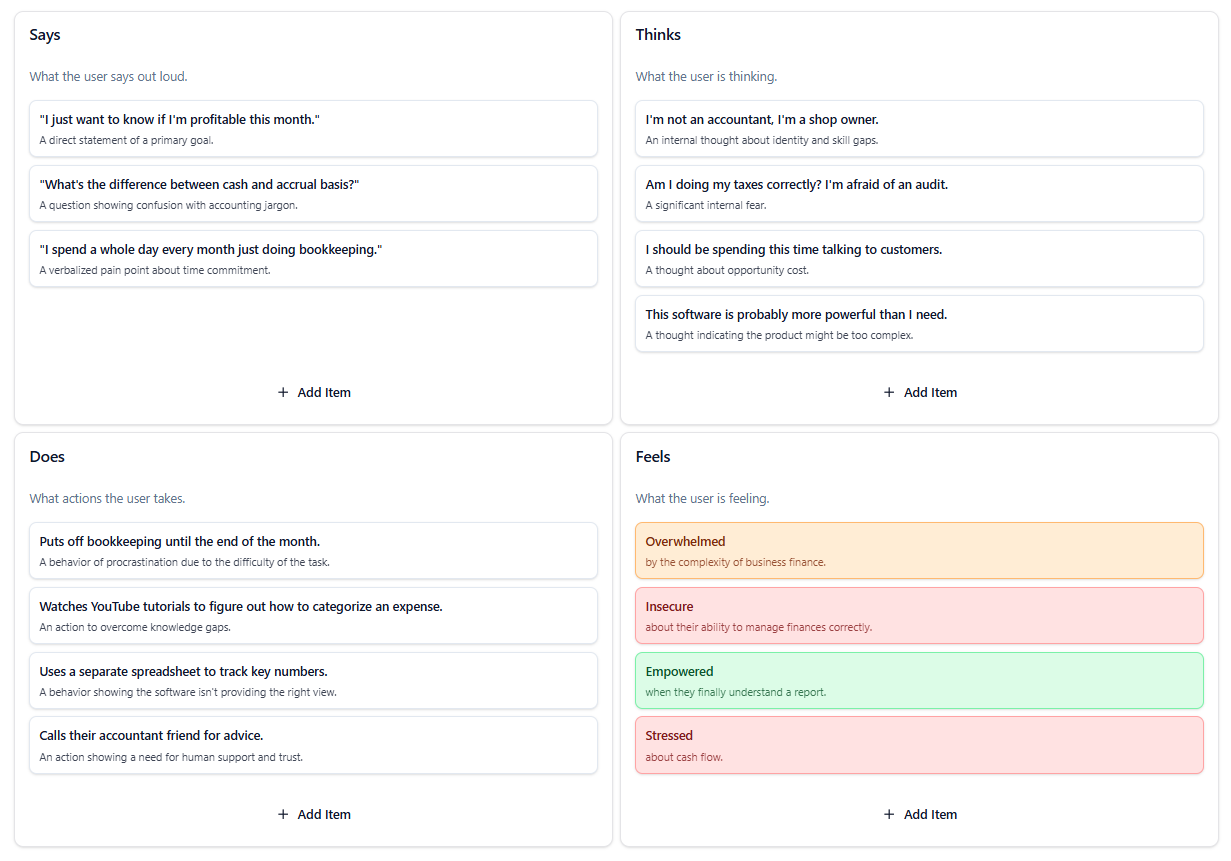Fintech
Small Business Owner Managing Finances
An empathy map for a small retail shop owner using accounting software for the first time.

Analysis & Interpretation
Background
This map captures the experience of a small shop owner grappling with accounting software. It highlights the user’s core identity as an entrepreneur, not an accountant, and their resulting feelings of insecurity and frustration with financial management.
Key Strategic Insights
- Identity Mismatch: The core insight is the user ‘Thinks’, ‘I’m not an accountant, I’m a shop owner’. They view bookkeeping not as their job, but as a chore that takes them away from their real job (talking to customers). This means the software must feel less like an accounting tool and more like a simple business health dashboard.
- Fear is a Powerful Motivator: The deep-seated fear of ‘an audit’ and ‘doing taxes incorrectly’ is a huge emotional driver. The software’s value proposition should be centered on providing peace of mind and confidence, not just features.
- Workarounds Signal Unmet Needs: The user ‘Does’ ‘use a separate spreadsheet’ and ‘calls their accountant friend’. These are clear signals that the software is failing to provide the simple, high-level insights they need and that they crave trusted, human-like guidance.
Strategic Summary
This persona needs a ‘Finance for Humans’ tool, not a full-featured accounting suite. The product should be designed to provide quick answers to their main question (‘Am I profitable?’) and automate as much as possible to minimize the time they spend ‘being an accountant’. The marketing and product language should be simple, avoid jargon, and focus on the emotional benefit of feeling in control and confident.
How This Was Built
This empathy map was created to demonstrate how understanding your audience’s mindset can guide better design, marketing, and communication decisions.

AI Insight Generation
The AI Brainstorm Tool provided prompts for the Thinks and Feels sections, offering emotional and motivational cues to enrich the empathy mapping process.

Organized Visualization
Colors separated user emotions, behaviors, and influences, while tags were used to connect recurring patterns between what people say and what they actually do.

AI Review for Consistency
Once completed, the AI Review Engine analyzed emotional alignment across all sections and recommended validating the Feels area through customer interviews.
Bring This Example to Life
Open this example to explore how emotions shape decisions, adjust observations, and test AI-generated insights to bring empathy into every stage of your design process.
